#herbig-haro 24
Photo
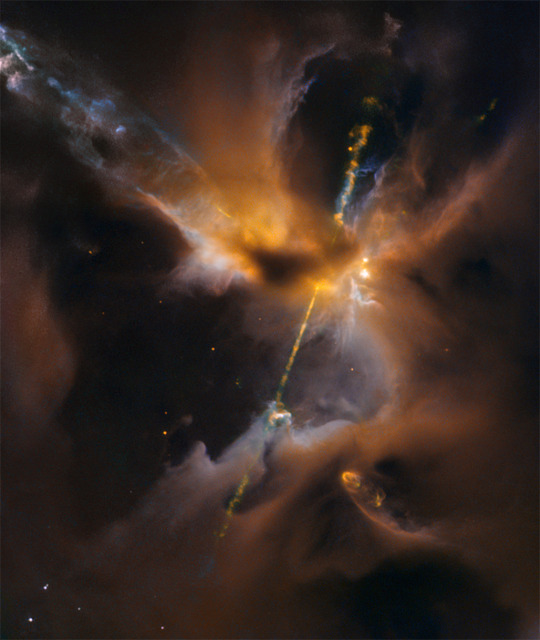
Herbig-Haro 24 taken on October 13 in 2009
#herbig-haro 24#astronomy#astronomy blog#astronomy photos#astronomy pictures#nasa#NASA photos#nasa pictures#space#universe#earth#aesthetic#tumblr#palette#lights#stars#NASA telescope#hubble space telescope#milky way#galaxy#galaxies#WHERE THE SKIES END
203 notes
·
View notes
Photo

Herbig-Haro 24 via /r/spaceporn http://bit.ly/2X7bFik
20 notes
·
View notes
Photo
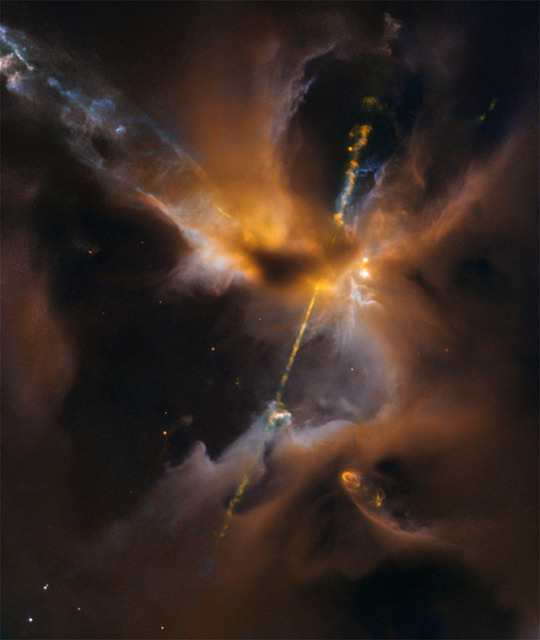
Herbig-Haro 24
#Herbig-Haro 24#nasa#stargazing#astrophoto#astrophotography#galaxy#astronomy#universe#space#nebula#spinningblueball#milky way#milky way galaxy#star
54 notes
·
View notes
Photo
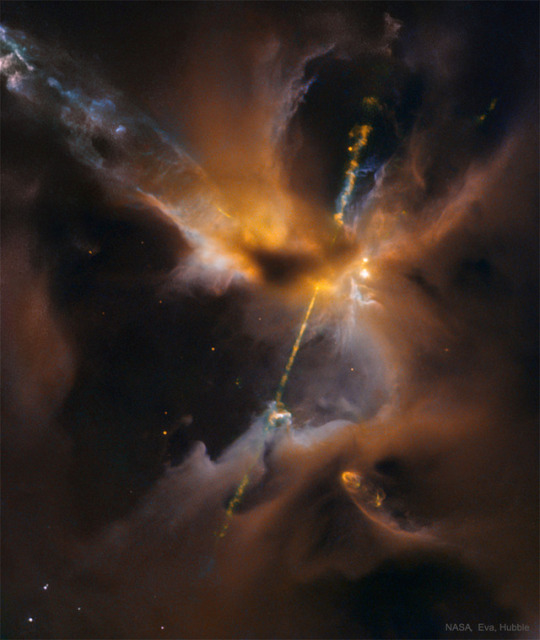
Dual Particle Beams in Herbig-Haro 24
1 note
·
View note
Photo
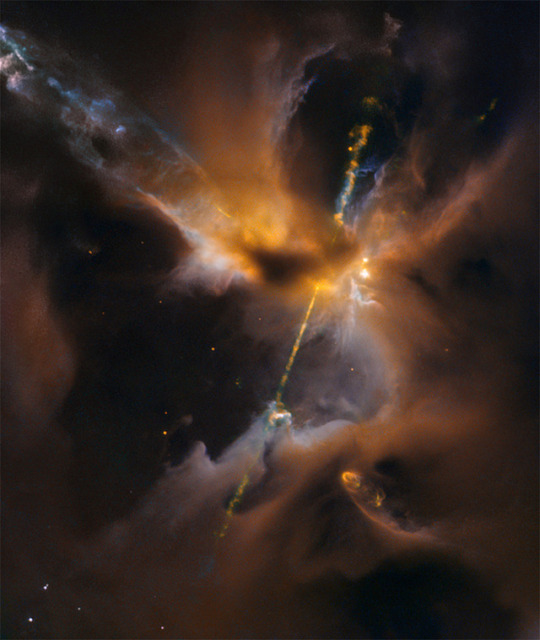
Herbig-Haro 24
Herbig-Haro 24 is an object located about 1,350 light years away in the Orion B Molecular Cloud Complex. Herbig-Haro objects are the result of shock fronts as superheated material from newborn stars collides with cooler surrounding material. This image is about a half light year across.
As stars form, surrounding material collapses into a flat, cool, rotating accretion disk. The protostar at the center pulls material from this disk as it grows, emitting jets of superheated material along its rotation axis- the path of least resistance. The superheated material creates shock fronts, heating surrounding gas to thousands of degrees Fahrenheit and clearing cavities in the clouds. The shock fronts clump and tangle, forming intricate shapes called Herbig-Haro objects.
Image from NASA, information from HubbleSite.
#astronomy#stars#space#herbig-haro 24#hh24#hh 24#herbig-haro#herbig-haro object#herbig-haro objects#science#orion#orion b molecular cloud#molecular cloud#protostar#protostars#star formation
154 notes
·
View notes
Photo
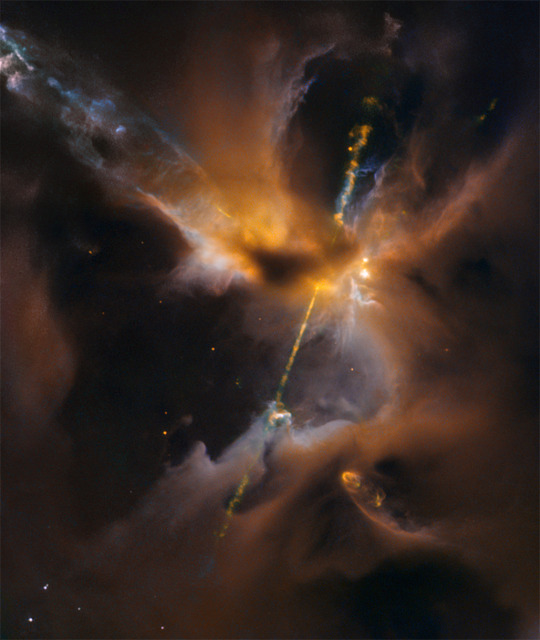
Herbig-Haro 24 taken on February 18 in 2014
#herbig-haro 24#astronomy#astronomy pictures#astronomy photos#astronomy blog#nasa#nasa pictures#nasa photos#aesthetic#tumblr#galaxy#galaxies#colors#stars#space#universe#palette#nebula#constellations#hubble space telescope#nasa telescope#milky way#february 18#2014#2021#where the skies end
46 notes
·
View notes
Photo
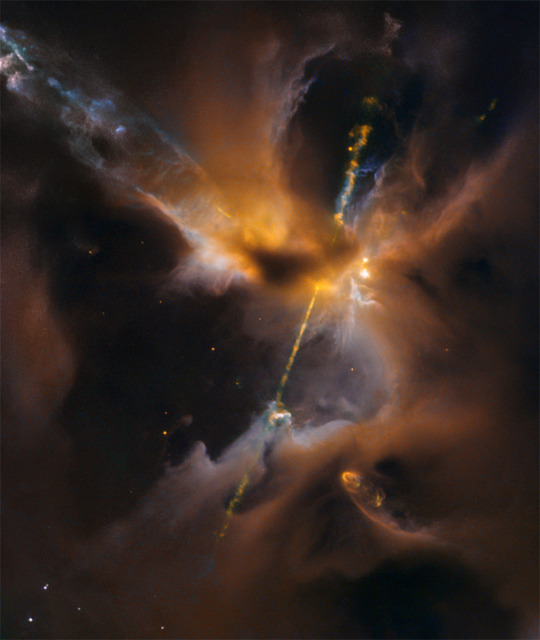
NASA Astronomy Picture of the Day 2015 December 18
Herbig-Haro 24
This might look like a double-bladed lightsaber, but these two cosmic jets actually beam outward from a newborn star in a galaxy near you. Constructed from Hubble Space Telescope image data, the stunning scene spans about half a light-year across Herbig-Haro 24 (HH 24), some 1,300 light-years or 400 parsecs away in the stellar nurseries of the Orion B molecular cloud complex. Hidden from direct view, HH 24's central protostar is surrounded by cold dust and gas flattened into a rotating accretion disk. As material from the disk falls toward the young stellar object it heats up. Opposing jets are blasted out along the system's rotation axis. Cutting through the region's interstellar matter, the narrow, energetic jets produce a series of glowing shock fronts along their path.
#Herbig-Haro 24#astronomy#space#science#cosmos#cosmology#universe#astrophotography#cosmicvastness#NASA#Astronomy Picture of the Day#APOD#nebula
533 notes
·
View notes
